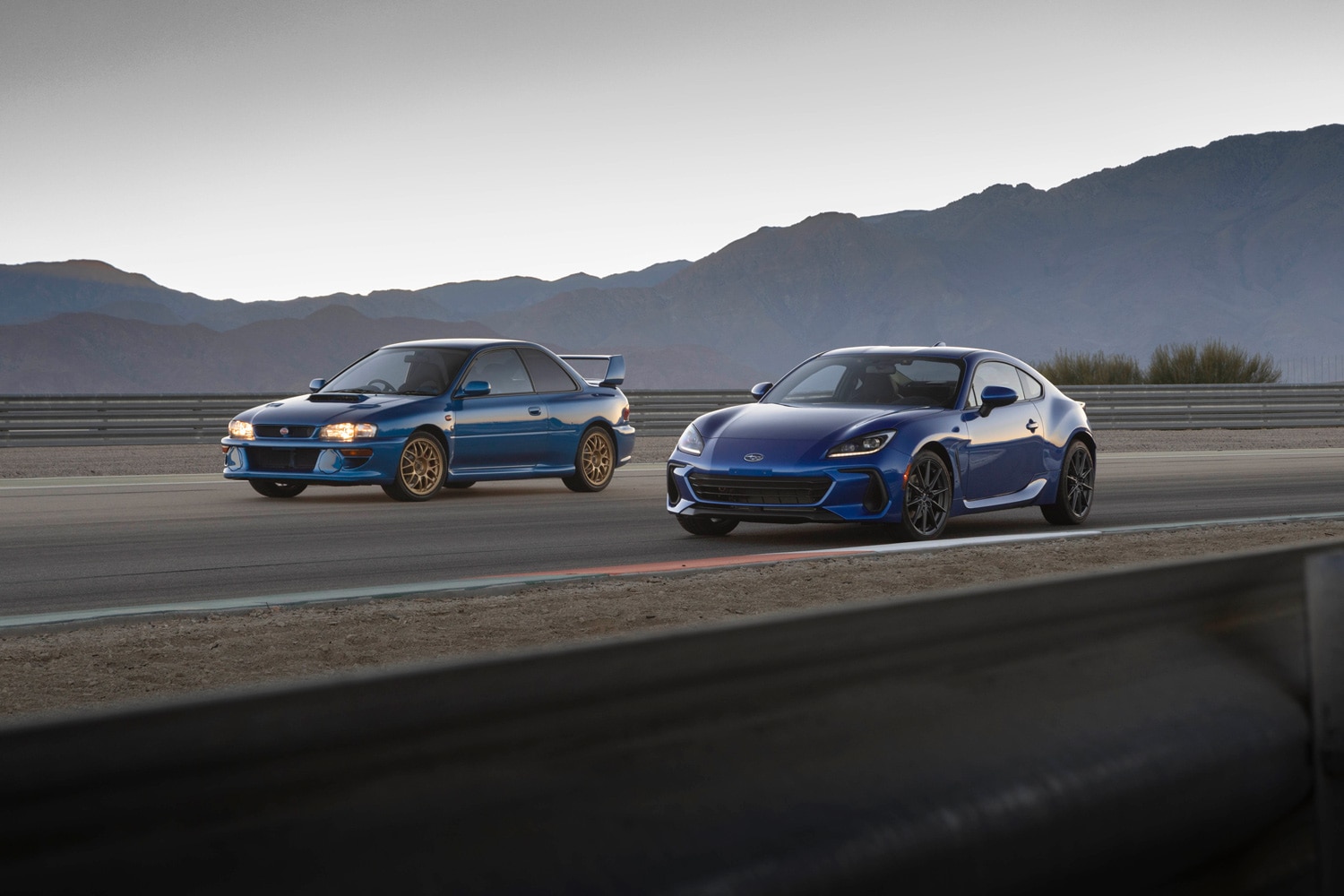What Is a Boxer Engine?
With horizontally opposed cylinders, the boxer engine supplies a unique take on automotive performance, thanks to its low and rearward position.
 Shutterstock
Shutterstock
Article QuickTakes:
Most engine configurations feature cylinders laid out along the crankshaft in a V-shape or inline design, but that's not always the case. Among the other choices is the boxer engine, a pattern in which the cylinders are situated on either side of a central crankshaft and are 180-degrees apart. Also known as horizontally opposed or flat engines, boxers have distinct advantages as well as certain disadvantages to consider.
What is a Boxer Engine?
The German engine designer and automotive engineer Karl Benz built the first flat engine in 1897. The design is unique as it features horizontally opposed pistons with the crankshaft in the middle. Specifically, this arrangement means that the corresponding pistons reach the top of the stroke at the same time, supplying balance with regard to momentum. The "boxer" term refers to the shape of the engine, but some describe it as a pair of boxers battling it out with punch-counterpunch moves.
The Benz design found its way into passenger and commercial vehicles as well as racing models. However, Benz did not utilize boxer engines after 1902, choosing inline engines instead and leaving the design for other manufacturers to develop years later.
One thing to keep in mind: all boxer engines are flat, or horizontally opposed, however, the term "boxer" shouldn't be used interchangeably with "flat" when talking about engines. Though uncommon today, some older flat engines—like the flat-12 found in the famous Porsche 917 race car—were actually 180-degree flat engines. Though they were externally identical to a boxer engine, the way the pistons connect to the crankshaft are different.
At the crankshaft "journal", which is just the technical term for the place the parts bolt together, boxer engines connect a single piston to the crankshaft, meaning there is a connection point for each cylinder of the engine. On 180-degree flat engines—and V-engines—a pair of cylinders shares a single journal side-by-side, meaning there are three journals on a flat-6 (or a V6). A six cylinder boxer engine would have six journals, one for each piston.
 Subaru
Subaru
Historic and Modern Usage
While Karl Benz stayed with boxer engines only briefly, the design found its way to aircraft and motorcycles. Later, the boxer design appeared in some cars with four- and six-cylinder engine configurations. One of the earliest applications is in the Volkswagen Type 1, a model later known as the Volkswagen Beetle. This model featured a boxer engine in its rear engine compartment with power sent to the rear wheels.
In the 1960s, Porsche racing cars utilized eight-cylinder boxers, but more common in their road-going cars were four- and six-cylinder boxer engines.
 Porsche
Porsche
Today, however, only Porsche, Subaru, and Toyota utilize boxer engines. The companies separately develop and employ four- and six-cylinder boxer engines.
Indeed, Subaru utilizes boxers across its entire model line, except in the all-electric Solterra SUV. The BRZ, WRX/STI, Forester, Outback, Impreza, Legacy, Crosstrek, and Ascent are boxer-powered. For Porsche, the design is limited to three models: Boxster, Cayman, and 911.
Lastly, the Toyota GR86 (formerly called the Scion FR-S and Toyota 86) also uses a flat engine since it's based on the Subaru BRZ.
Boxer Engine Advantages
There are several advantages to utilizing a boxer engine:
- The shape makes it easier for placement in the engine bay. Specifically, this engine sits lower and further back in that compartment, nearer to the firewall
- Due to its unique location, the design results in improved balance with drivers claiming optimum handling
- If there is an accident involving the engine, it is more likely that it will be shoved underneath the passenger compartment instead of into it
- It minimizes vibration compared to other designs and improved off-the-line acceleration
- Engine layout often produces some unique engine notes, which some car enthusiasts tout as superior
Boxer Engine Disadvantages
If the boxer engine (or any engine for that matter) were nothing but upsides, more manufacturers would use it. Among the disadvantages:
- Its wide size makes it somewhat more difficult to work on, especially in tight quarters
- As a result of its position, maintenance and repairs are usually higher in cost, in part because it takes mechanics longer to do routine work, like changing spark plugs
- These engines aren't the right choice for just any vehicle design. Even when Subaru began developing high-volume models such as the Ascent SUV, the design is centered chiefly around the engine bay.
Making the Choice
Like many other engine choices, there are pros and cons to boxer engines. You'll have to weigh those as you consider the right choice in your next vehicle.



